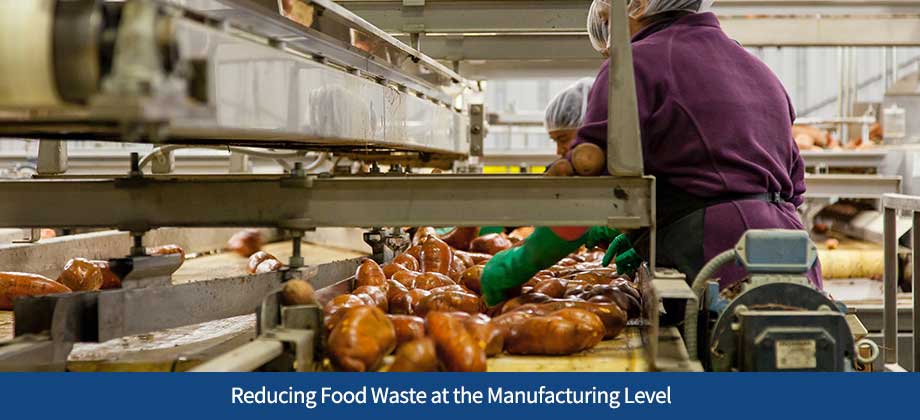Reducing Food Waste at the Manufacturing Level

When it comes to food waste, the United States Department of Agriculture (USDA) estimates it accounts for 30-40 percent of the food supply. Waste happens at every level—from food production to the supply chain, all the way to retail operations and consumer consumption/disposal. There is a concerted effort between the USDA and the Environmental Protection Agency (EPA) to reduce food waste by 50 percent by 2030.
Manufacturers are responsible for billions of pounds of this food waste every year, which is defined by Feeding America as “safe, high-quality food that is thrown away rather than eaten.” Much of this waste ends up in landfills, where it decomposes and produces methane—the greenhouse gas that’s a large contributor to global warming. Less food waste has a host of benefits that include labor and purchasing cost savings, reduced landfill emissions, improved energy management, and the betterment of our communities through food donations. What part can manufacturers take in helping to curb food waste and realize these positive outcomes?
Packaging Updates
We don’t often realize the importance of packaging when it comes to preserving our food. Reducing the amount of packaging material might seem like an easy solution, but bear in mind that this could potentially increase the probability of food waste. We can turn instead to updates on the packages themselves: clearer expiration date labels, improved cooking and thawing instructions, and even creating better containers that allow us to use more of the food within the package rather than tossing it out (we’re looking at you, toothpaste).
Portion Control
Portions in the U.S. are fairly large compared to the rest of the world, but that doesn’t necessarily mean we’re eating all that food. Sometimes, portions of pre-made food or boxed mixes are actually too much and we end up throwing away a lot of what was thought to be a perfectly sized meal by the manufacturer. Instead, manufacturers can consider lowering the portions in a standard box, can, or bag to reduce the amount consumers pitch into the garbage. Think single-serving hummus or one-person boxed cake mixes.
Forecasting
Accurately identifying what and how many ingredients are needed is tantamount to reduced waste. If too much is ordered because of inaccurate forecasting, then those perishable items go in the trash. Better modeling can help improve forecasting and lead to less waste and more profits.
Consumer Education
While manufacturers do contribute to food waste, the issues don’t all reside with them. There is a lot that manufacturers can do to increase consumer awareness of food waste. In addition to packaging updates, portion control, and better forecasting, the industry can also educate consumers on how best to store food and reduce their own consumption.
There is a lot of work to be done if we’re serious about reducing the amount of food waste by 50 percent. Efficiencies across the board are needed to combat a true crisis. With help from the manufacturing industry, this goal is made easier to reach. Stay tuned to the Financial Pantry for the latest manufacturing news, trends to follow, industry regulations, and more. ARF Financial is excited to keep you at the forefront of the information that matters most to your success.

